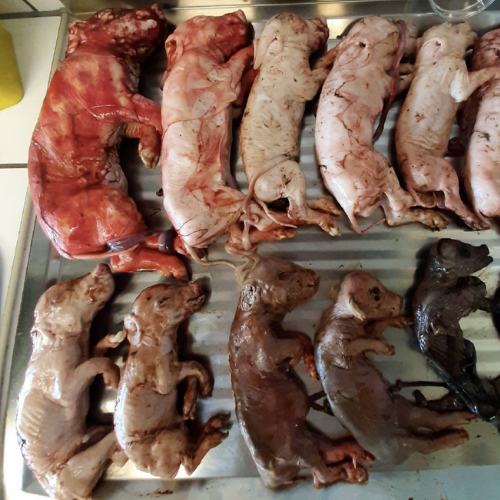Sample collection for reproductive disease
Sample collection is extremely important for a correct diagnostic analysis. We describe different methodologies on how samples from reproductive problems can be collected for analysis with PathoSense.
-
Heterogeneous litters are interesting to identify a possible infectious cause. This is a sign that the infection has spread gradually through the litter.
-
Stillbirth, mummification, embryonic death & infertility
-
Whole fetuses should be submitted
-
Purification with the sampling kit is not neccessary. The tissue collection, sample processing & pathogen purification will be conducted at the PathoSense laboratory.
-
Provide a sampling kit with the litters & register the barcode for the analysis in the mobile app. This allows us to perform a proper identification & tracking of the samples.
-
Ensure litters are packed in a hygienic way
-
Pig selection: select brownish piglets or mummy in case of suspected SMEDI cases. Do not select the largest piglets (rigor mortis, these piglets may also contain antibodies against the in utero infection)
-
-
If mummification is absent, collect fetuses that are not in rigor mortis (rigid fetuses). If all fetuses are in rigor mortis, it means that the fetuses have been expulsed alive. The problem has to be sought in the sow. Take proper samples from the sow.
-
Only submit fresh piglets collected within 24 hours and stored at 4°C. If collected during the weekend, store them at 4°C
Picture hereunder: recommended piglets for submission are the lower row
